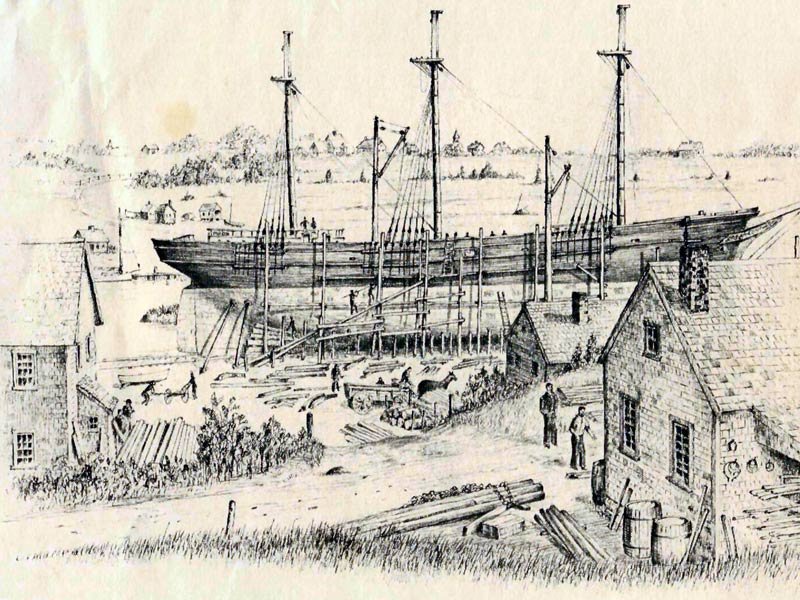Being in the thick of the Atlantic hurricane season, it’s a good time to look at the one storm which had the greatest impact on Cape Cod history. If you asked twenty Cape Codders which storm this was, there’s a very good chance that they wouldn’t choose the Great October Gale of 1841. The 1938 Hurricane, the twin Hurricanes Carol and Edna of 1954 arriving just 11 days apart, or Hurricane Bob might be mentioned. Reaching back to the 19th century, the Blizzard of 1888 even could be an answer.
However, Cape Cod was rebuilt after each of these massive storms and continued on. Only one storm, the Great October Gale of 1841, changed the course of Cape Cod’s economic history. Today, this storm would have been classified as a large hurricane, and its direct fury as a storm lasted four days. Its impact on the Cape’s economy is still felt today.
Lasting from October 2-6, the outer beach was strewn with the parts of 50 wrecks and 100 bodies were taken up and buried. Cape fishing fleets were decimated by the storm. The Cape fleet was at George’s Bank fishing for mackerel at that time, and was destroyed as the storm hit both the Cape and George’s Bank. Truro lost 57 men and seven vessels; Dennis lost 22 men, and Yarmouth lost 10 men - a tragic loss for those small tight-knit communities. On the south side of the Cape, Falmouth lost as many men as all of the north side. Fishing fleets never recovered from the damage and there was neither money nor manpower to rebuild the fleet. It was shortly after this storm that fishing weirs began to appear along beaches and inlets of Cape Cod. The fish weirs were a less expensive method of fishing, but were far less successful, and never replaced the fleets. Only Provincetown’s fleet was rebuilt to its former size.
Places where fish weirs had been in use before the storm were decimated by it. Follins Pond at the northerly end of Bass River silted in so badly that fishing on that salt water pond could no longer remain a viable economic force. The Weir Village section of Yarmouth, which bordered Follins Pond and Mill Pond, became a ghost town. Houses were even moved to other sections of the town after the storm. Today, Weir Road in Yarmouth gives few clues to the former active fishing village of the area.
Chase Garden Creek took in so much silt that it lost its tidal force and ability to float schooners down to Bass Hole. From the October Gale on, the tide never came into Bass Hole as it had. Prior to 1841, it was Chase Garden River. While the old-timers continued to call it that, within 25 years of the storm, maps had started referring to it as a creek. The two ropeworks in Yarmouth, one by the Yarmouth Port playground and another along Bass River, stopped production by 1850, and perhaps a few years earlier.
The only exception to the loss of shipbuilding was at the Shiverick shipyard in East Dennis. Starting in 1848 and lasting until 1863, Shiverick built some of the best clipper ships ever to sail.
Image from Dennis Historical Society.
Saltworks, once so common around the Cape, took an incredible hit. With fewer fishing vessels to buy their salt, and the cheapness of imported salt, many saltworks were never rebuilt after the October Gale of 1841. Some of the wood from these saltworks was used in construction. One of the more notable was the Kelley Chapel, now on the Historical Society’s grounds.
Saltworks along Bass River.
Few storms have hit at a worse economic time. Starting in the decade after the storm, the Cape Cod’s population experienced a decline that wasn’t reversed until the century ended. Only the rise of tourism, which began after the Civil War, brought the economy of Cape Cod some new hope.
The Nobscusset Hotel, courtesy of the Dennis Historical Society.
Excerpted from an article by Duncan Oliver.
For more details about the October Gale, watch this interesting video, courtesy of Friends of Ancient Cemetery.









